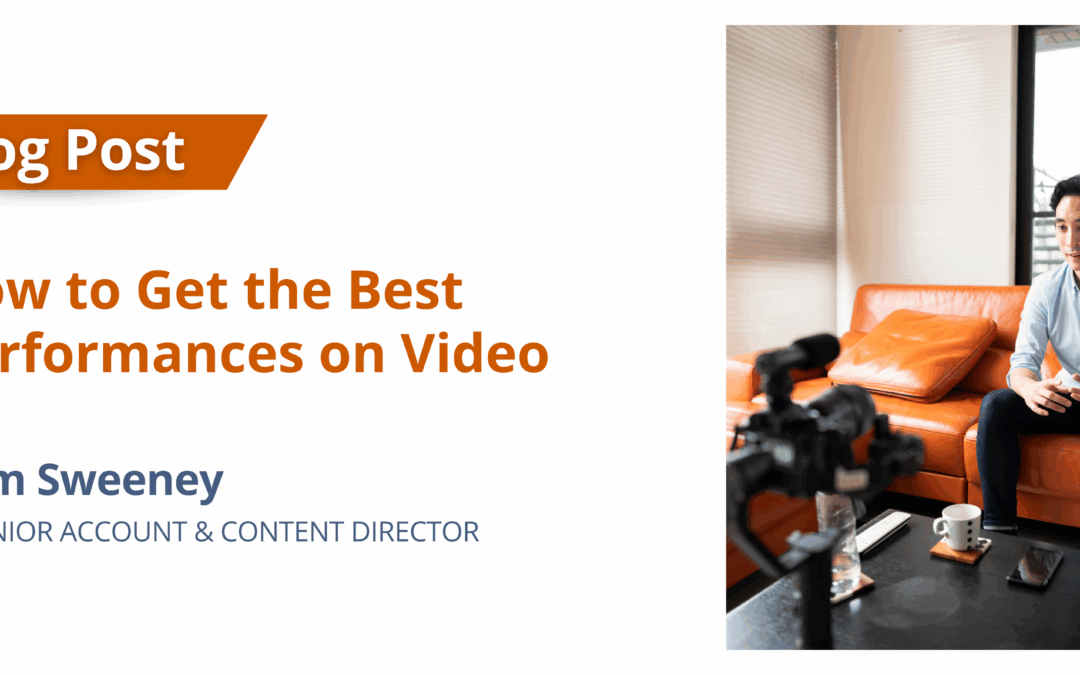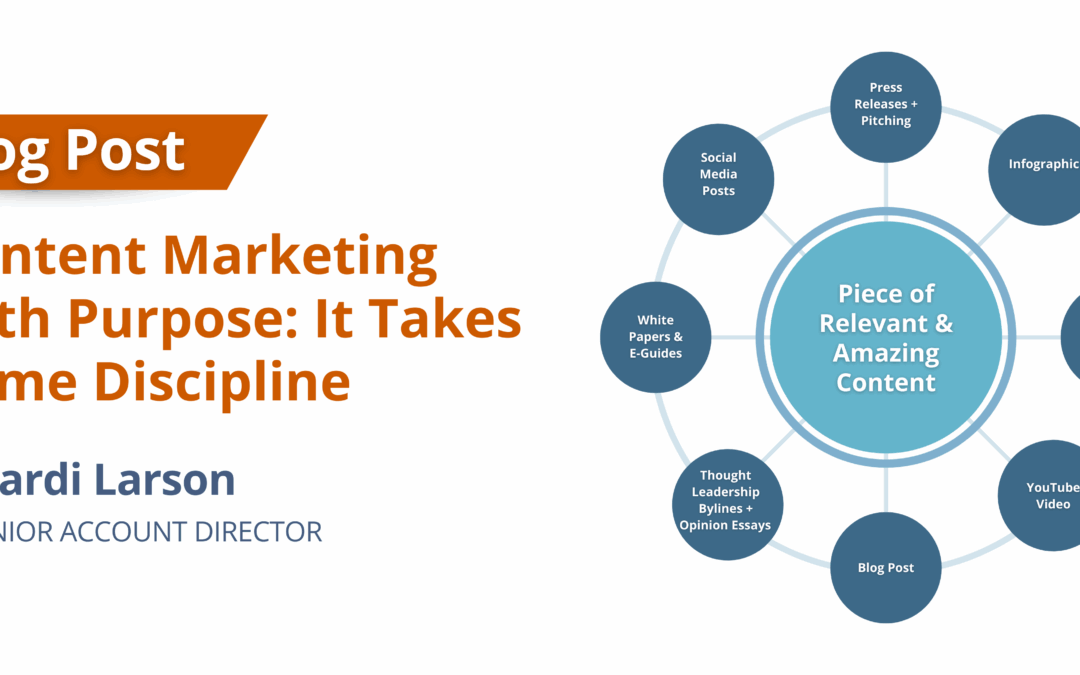
by Brandon Glenn | Sep 3, 2025 | Blog
Despite many protestations otherwise, the press release is not dead.
Press releases remain a useful means of sharing key company news, communicating with the broader market, and generating interest among journalists that ideally leads to attention from prospects and customers.
This blog post will offer several key tips for pitching press releases to media, such as including an attention-grabbing subject line, a newsworthy angle that ties in to current industry trends and targeting the right journalists.
Craft an attention-grabbing subject line: The subject line is the first — and often only — chance to capture a journalist’s attention. A compelling subject line should be concise, informative, and engaging without sounding like clickbait. It’s crucial to clearly communicate the value of your news in as few words as possible.
While “Exciting News from XYZ Company” may work as the headline of a social media post, for a subject line that will attract a journalist’s attention, try something more direct like “XYZ Company Launches AI Tool to Improve Hospital Workflow Efficiency.”
Additionally, personalization also goes a long way. Consider referencing a journalist’s recent work or interests in your subject line or introduction to demonstrate relevance and effort.
Lead with a newsworthy angle: Journalists are looking for stories that are timely, relevant, and meaningful to their audience. When crafting a pitch, ask yourself: Why should this news matter right now? Is it part of a broader trend? Does it address a timely issue? For example, tying your announcement to a current event or growing industry concern — such as cybersecurity in healthcare or the rise of health-at-home — can significantly boost the chances of media pickup. A good press release pitch should make the connection between your news and the larger narrative obvious and compelling.
Target the right journalists: Mass emailing a generic press release to hundreds of media contacts is unlikely to yield results and may even harm your reputation. Instead, take the time to identify the right journalists for your story. In general, the best pitches are highly targeted and personalized. Research each journalist’s recent stories, preferred topics, and audience.
This information helps you tailor your message and increases the chances of a positive response. Using tools like media databases and journalist profile platforms can streamline this process, allowing marketers to build curated lists based on beat, outlet, and past coverage.
Make it easy to cover your story: Once you’ve caught journalists’ attention, don’t make them work to understand your news. Provide all essential information clearly and concisely in the body of the email. Include a strong opening paragraph, bullet points with key facts, the full press release, and any relevant visuals or multimedia.
It’s also helpful to offer interview availability with subject matter experts, quotes, or additional background context upfront, so journalists have everything they need to write a story without chasing down more information.
Follow up but don’t spam: Following up after your initial pitch is a standard and sometimes necessary part of media outreach. That said, there’s a fine line between being persistent and being pushy. Wait around 48 hours before sending a polite follow-up email. Keep it short, reiterate the relevance of the news, and offer to provide any additional information.
Avoid sending multiple follow-ups if you don’t hear back. If journalists are interested, they’ll respond. Maintaining professionalism and respecting their time will preserve the relationship for future pitches.
Conclusion
Successfully pitching press releases to media requires more than blasting an announcement to a generic list. By focusing on personalized, timely, and targeted outreach, while also making journalists’ jobs easier, marketers can increase the odds that their news will get the coverage it deserves.

by Morgan Lewis | Aug 20, 2025 | Blog
In 2025, decision-makers running health systems, physicians’ practices, insurers and life science companies have more demands on their attention than ever. Yet, even today, these leaders continue to seek out and read thought leadership articles to gain insight into the challenges facing their organizations.
Given their potential influence, these articles continue to play a valuable role as part of an integrated and multifaceted PR/marketing campaign. At Amendola, we regularly help clients craft compelling bylines that resonate with both readers and trade publication editors. But we still wanted to do a pulse check to determine what truly distinguishes one byline from another.
To explore this question, we recently ran a poll on LinkedIn asking: Which of these three is most crucial for getting published and engaging readers when writing thought leadership?
Here’s how the votes broke down:
- Focus on an industry problem: 77%
- Go easy on the self-promo: 15%
- Respect your readers’ time: 8%
Focusing on industry challenges took the top spot by a mile. Still, all three elements are nonetheless essential to thought leadership content that captures attention, builds authority, and clears editorial hurdles. Here’s a closer look at why each matters and how to ensure your bylines accurately reflect them.
Focus on an Industry Problem
The clear winner of our poll, this audience-focused approach centers on their needs and pain points. It is clear from the results that trusted thought leadership should not necessarily be about what your organization wants to say, but rather, what your audience needs to hear.
Editors prioritize content that informs and helps readers do their jobs better. If a byline sheds light on a genuine industry challenge, such as data silos hindering improvements in care quality and outcomes or the slow adoption of AI due to regulatory uncertainty, it immediately signals relevance.
Similarly, in our experience, the best-performing bylines from our health-tech and life-science clients have been those that closely align with the most pressing issues faced by providers, payers, pharmaceutical leaders, or other health IT buyers. For example, instead of broadly discussing the benefits of remote patient monitoring, a more valuable angle would be to examine how payers are adjusting their reimbursement models in response to regulatory uncertainty and what that means for provider adoption at scale.
In most cases, this approach means you should start your byline by identifying a pressing question or problem. If you are unsure about which issue will resonate most, start listening to your customers, the news, and the conference sessions that everyone is buzzing about. The more you anchor your thought leadership in the day-to-day challenges of your audience, the more likely it is to resonate and get published.
Go Easy on the Self-Promo
While only 15% of poll respondents chose minimal-to-no self-promotion as the most crucial trait of published thought leadership, it remains a major factor in whether an editor accepts or rejects a byline. Many otherwise strong pieces lose credibility when they shift from insight-sharing to sales-pitching.
The line between thought leadership and marketing copy is often thin, but it is critical. Readers come to trade publications for insight, not product brochures. Of course, your leaders should still showcase their expertise, but it needs to be demonstrated through stories, lessons learned, or innovative thinking, not direct promotion.
For example, if your company recently led a project that improved medication reconciliation accuracy, open the article by focusing on the broader issue: the clinical and safety consequences of poor medication data. Then, explain how to identify and solve the problem, sharing generalizable insights that other health systems or vendors could apply.
Ultimately, the goal is to earn trust, which is built by offering something of value without strings attached.
Respect Your Readers’ Time
Although this characteristic received the fewest votes in our poll, it should not be underestimated. Clarity and conciseness are the unsung heroes of persuasive writing.
Your audience is busy. They may be reading between meetings, during a quick coffee break, or in the few quiet minutes before their next patient or pitch. A strong byline makes their time feel well spent. That means using plain language, avoiding unnecessary tangents, and structuring your argument in a way that is easy to follow.
In technical fields such as health tech or clinical innovation, it may be especially tempting to showcase expertise through complex language. However, the best thought leaders recognize that simplicity is indeed a strength. One compelling idea, clearly expressed, will consistently outperform three half-developed ones wrapped in buzzwords.
If your byline cannot be understood by an intelligent, time-pressed reader in a few scrolls or less, it is time to revise.
Bringing It All Together
Albeit unscientific, our poll results reinforce what we have long known from working with leading trade and consumer publications: the strongest bylines solve real problems, put the reader first, and let the value of the insight speak louder than the brand behind it.
In a time where healthcare leaders are navigating unprecedented complexity and constant change, the value of strong thought leadership cannot be overstated. Articles that identify real challenges, offer informed perspectives, and respect the reader’s time stand a far better chance not only of being published but also of being read, remembered, and shared. Whether written by an executive, subject matter expert, or seasoned communicator, the best thought leadership doesn’t just fill space, it fuels meaningful dialogue across the industry and elevates your company’s profile in the market.

by Jim Sweeney | Aug 6, 2025 | Blog
The engineer shifted from foot to foot, stumbled over his words and his eyes darted all over the room.
Yet, the client insisted that this particular engineer be featured in the company video about a new polymer used in artificial joints. So we shot take after take while the poor guy fumbled with a knee joint.
A week later, we sent an initial cut of the video to the client, who noticed that the engineer had been holding the knee joint upside down and backward the entire time. There was no money in the budget for another out-of-town trip to redo the shoot so we edited it so the engineer could be seen only from the chest up. This was a long time ago while working for another agency, but this disaster has stuck with me.
Video is an incredibly compelling medium, but it can be jarring when it’s done poorly. We’ve all seen enough movies and TV to expect good production values and performances to notice when they’re missing.
And they’re often lacking in one of the most common forms of marketing video — the ones featuring a company spokesperson or leader. Typically, the subject appears alone onscreen, often sitting on a chair or stool or at their desk, talking to an off-camera prompter whose voice is not heard. These videos often are used to introduce a new product or service or as an introduction to the business.
Unlike media interviews, these videos are entirely under the control of the client. Done well, they can be highly effective; done poorly, they can give the company and executive a black eye.
Here are some tips for avoiding black eyes – and get the best performances on video:
Don’t force it. Some people, like that engineer, simply will never be comfortable on camera, so don’t put them in front of one. No amount of coaching or reassurance will get these people to relax so find someone who is more comfortable.
Take your time (but not too much). Rushed video is bad video. Give the subject some time to relax on the set and get used to the surroundings. Of course, CEOs often are in a hurry so the crew should respect their schedule.
Use multiple takes. Interviewees often feel pressured to nail it on the first take and that causes undue pressure. Remind them that they’re not live and they can do it as many times as it takes to get it right. Also, most videos are pieced together from the best parts of multiple takes. Most importantly, reassure them that the audience will see only the final version.
Prepare the subject. Go over the subject matter beforehand and share the material with the interviewee well before the shoot so they can be familiar with it. However, be careful that they do not memorize it in order to avoid sounding scripted.
Incorporate the question in the answer. Because the interviewer is unheard and offscreen, the viewers won’t know the question being asked of the subject. So if you ask the CEO, “What was your first job?”, make sure he doesn’t answer, “Waiter.” Instead, he should say, “My first job was as a waiter.” That way, the audience can follow the thread.
Establish a rapport between the interviewer and interviewee. Even though the interviewer will be unseen and unheard in this style of video, they’re the person with whom the subject is talking and maintaining eye contact throughout the video. They are the anchor for the subject. The two should spend a few minutes together before the shoot to get comfortable with each other and establish a link.
Be nice. In most cases, the interviewee is looking for reassurance from the crew, if not overtly, then subconsciously. An impatient or unfriendly interviewer, sound tech or videographer can give off negative vibes that rattle the subject and ruin the interview.
Hire a stylist. I’ve had executives balk at the idea of someone applying a little powder to their brow, but the alternative can be a spokesperson so shiny-faced that the glare obscures the message. Stylists also can advise on appropriate clothing and spot faults, like a crooked tie.
Follow these tips, make sure the knee joint is right side up, and you should get a video that makes you and the CEO proud.

by Mardi Larson | Jul 23, 2025 | Blog
In today’s fast-moving digital world, content marketing takes some discipline. You can’t rely on great content alone — it demands structure, consistency, and a results-driven mindset. To establish true thought leadership and maintain brand credibility over time, organizations must adopt a rigorous approach to content planning, creation, and distribution. Below are some proven best practices that can help advance your overall content marketing program from good to great.
- Develop an Editorial Calendar – Plan your content ahead of time, aligning with product/service launches, company or industry events, webinars, speaking engagements, and more. Don’t forget strategically aligned social holidays, which can help drive engagement.
- Be Helpful and Educate – Drawing from your ideal customer profile and target personas, think through their pain points and what your product or service helps them solve. Think through the questions they ask themselves every day and answer them! Driving out educational and informative content is a great way to position your organization as a thought leader and the go-to resource for smart, useful content.
- Be Relevant – Track the trends and news events in your industry and reference and tie to these regularly. Consider a weekly insights column or quarterly report to curate the top trends to watch with your take on why it matters.
- Create a distribution tip sheet or checklist – Develop a PESO-based content distribution framework specific to your company and refresh it quarterly. I call it this the “Content Marketing Wheel.” Pull it out and review it for each new content opportunity. There are now more channels than ever before from news releases to YouTube and this tool will help you think through the opportunities well suited for each piece of content.
- Monitor and Measure – Use analytics tools to track engagement, media mentions, and conversion rates. Regularly analyze these metrics – some of the best content marketers do this daily! Assess and adjust your content marketing strategy based on channel performance.
- Engage with Industry Influencers – Build relationships with journalists, analysts, and other industry thought leaders to enhance your reach. Foster collaborative opportunities for content co-creation such a joint webinar or co-authored thought leadership article with a business partner — 1+1=3!
- Encourage Employee Advocacy – Empower employees to share content on their professional networks to expand visibility, credibility and optimize content reach. Leverage internal experts and lift them up as brand ambassadors to enhance the credibility of the expert and the organization.
Maximizing Earned Content – Four Key Tips
Earned content — media coverage, awards, analyst reports, and speaking opportunities — is one of the most credible forms of content, but it’s often underleveraged in content marketing and the PESO model. The key to maximizing earned media is following a “create once, share everywhere possible” approach:
- Repurpose Media Coverage – If your company is featured in an article or analyst report, don’t just let it sit on the website of that publication or firm. Share it across your company’s blog, social media channels, and presentation decks. When sharing via blog post, include additional commentary to showcase your expert insights and include a backlink to the article or report. Backlinks to reputable media outlets bolster your website’s authority ranking on search engines like Google.
- Leverage Awards and Recognition – If your company wins an award, create a news release and issue it on a wire service, share the news on social media, update your website, and include it in email campaigns. Consider running a paid campaign sharing this exciting news. Recognition builds credibility, but only if people know about it.
- Maximize Speaking Engagements – When a leader from your company speaks at an event, record it, create short video clips for social media, and repurpose key takeaways into a post or infographic for your company’s blog. Consider turning the presentation content into a LinkedIn article series, a webinar or a podcast episode for additional mileage. Don’t forget to do a news release covering the speaking engagement either before the event or after and be sure to include details and key callouts from the high-value presentation itself.
- Cross-Promote on Different Channels – Content should not exist in silos. Leverage your high-value content everywhere possible. Reinforce thought leadership by integrating earned content across the many channels you have available to you. When you get a piece of high-value earned media coverage, pull out your Content Marketing Wheel to decide where to share it.
Make Every Piece of Content Count
Be disciplined, stay proactive, and always look for ways to get more mileage out of every single piece of content you create.
Great content doesn’t just inform — it influences, builds trust, and opens doors. By applying structure to your content marketing strategy and embracing a disciplined, PESO-aligned approach, you can unlock the full value of every asset you create. Always ask: how can we make this content piece go further?
If you’re looking to bring more rigor and results to your content marketing, the A-Team is here to help. From strategy to execution, we know how to make your content work harder — and smarter — for your brand or business.

by Mardi Larson | Jul 9, 2025 | Blog
Content marketing is a specialized function of marketing that focuses on creating, publishing, and distributing valuable, relevant, and high-value content to attract and engage target audiences. Having been in strategic communications roles for more than three decades, I embrace this model as the modern version of yesteryear’s “integrated communications” approach, where we ensured that content was widely distributed and shared across all the communications channels available to us. Back then there were only a handful of channels where today new channels are popping up every nanosecond, making content marketing programs more opportunistic and increasingly complicated all at the same time.
Content marketing is a smart approach for companies of all sizes, including early stage and maturing companies that want to establish themselves as thought leaders, as well as to build trust, establish industry authority, generate leads, and ultimately drive profitable customer engagements.
Content marketing is both an art and a science.
It requires creativity to craft compelling stories with helpful information that’s search engine optimized, as well as the discipline to ensure that content is planned out and effectively distributed and leveraged across all communications channels for maximum impact. In today’s fast-paced digital media landscape, simply creating great content and posting it on a company blog isn’t enough. You need a disciplined approach to ensure the great content you worked so hard to create reaches audiences across all the ever-evolving channels available.
I have a mantra – create once, publish and post everywhere possible. The art of repurposing content across all the channels is important. Communications pieces shouldn’t be siloed, they should be shared.
That’s where the PESO model comes in.
Understanding the PESO Model
The PESO model stands for Paid, Earned, Shared, and Owned and it is a structured framework for content distribution that ensures your content gains maximum exposure. Let’s break down PESO across the four areas and the common channels and forums within each.
- Paid Media includes traditional and digital advertising where companies pay for visibility. It quickly expands reach, driving targeted website traffic and increasing brand awareness. Common paid media channels include:
- Social media ads (Facebook, LinkedIn, Instagram, TikTok, etc.)
- Pay-per-click (PPC) search engine advertising
- Display advertising (banner ads, retargeting, and programmatic ads)
- Sponsored content and paid influencer partnerships
- Streaming ads on Hulu, NetFlix, Amazon Prime, etc.
- Traditional media such as TV, radio, billboards
- Earned Media is exposure gained through third-party entities. Earned media is just that – earned (not paid for). And it’s one of the most credible forms of media in the PESO model. It comes from external sources that provide the added value of independent validation for your company – its expertise, opinion, innovation or product. Earned media includes:
- Press coverage (features, quotes, and mentions in the media)
- Industry awards and recognitions
- Speaking engagements at conferences and industry events
- Coverage in industry analyst reports and recommendations
- Shared Media involves organic content distribution through social engagement. Shared media is a critical component for consumer brands and is often an underutilized area for B2B companies. This includes:
- Social media shares and engagements
- User-generated content (customers organically sharing experiences with your brand)
- Brand/company mentions and hashtags
- Organic, non-paid influencer engagement
- Community discussions (LinkedIn groups, Reddit, industry forums)
- Owned Media refers to content that a company owns and thus directly controls. These channels are essential because they allow companies to manage their messaging, share stories and provide valuable resources to their audiences. Examples include:
- Blog posts and company website content
- Whitepapers, case studies, e-books, infographics, reports and other informational resources
- Webinars, podcasts, and newsletters
- Sales presentations and corporate reports
- News releases
For a content marketing strategy to be successful, all four PESO areas and the many channels and forums nested within each should be considered.
Don’t just do a webinar – leverage the content across as many channels as possible. Don’t just do a news release on a news wire service, create a blog about bylined directly from an on-staff expert offering a personal perspective, post it to your newsroom and create social media posts. And that high-value earned media coverage, share it everywhere – work it into speaking engagements, awards applications, sales presentations, marketing collateral, social media channels, investor decks and more.
Content marketing isn’t just about creating high-impact and useful content – it involves strategic distribution and integration across multiple communication channels and touchpoints. By following the PESO model and maximizing earned media through smart distribution, companies can enhance their credibility and position themselves as true industry thought leaders. Their companies will come up more easily in online traditional and generative search, which is powerful for any B2B thought leadership brand.

by Brandon Glenn | Jun 25, 2025 | Blog
You’ve planned, outlined, and drafted some content that clearly communicates the points and messages you set out to convey. Time to sit back, relax, and think about what’s next, right?
Not exactly. Before the content appears publicly, it must go through the editing process. The more people who are involved in the process – writers, marketers, executives, subject matter experts – the more lengthy and convoluted the process becomes.
Welcome to the “dark side” of the editing process, as Joel Schwartzberg writes in Harvard Business Review, which may be characterized by excessive nitpicking, numerous disagreements, and competition over authority and expertise. Fun times all around!
However, editing doesn’t always need to be so painful. To improve the editing process, keep in mind the following three tips:
Be mindful of version control: Given that editing often figuratively involves several cooks in the kitchen at the same time, it’s important that those cooks work from the exact same recipe. In the public relations world, this means that we must ensure that all editors work from the same version of the content. This is easy in the beginning, but the process often breaks down as individual editors simultaneously make changes to the same Word document.
Three editors may equate to three different versions of the same content, creating challenges in reconciling what may be contradictory edits. To avoid this, develop a plan that includes all the individuals who will need to make edits, and send the document to them one at a time. Separately, shared cloud-based tools such as Google docs can reduce problems with version control but may bring their own set of issues with competing voices.
Resist the commenting urge: We all understand the urge to include edits in comments in the right-hand margin of a document or the body of an email. Resist the urge. Comments in the margin lead to confusion, misinterpretation, and inefficiency. Instead, if you think a change needs to be made to the text, simply make it. Save comments in the margin for genuine questions – not edits. Doing so will reduce the time and ambiguity associated with the editing process. As an alternative…
Make use of track changes functionality: The tools “Track changes” in Word and “Suggesting” in Google docs can be an editor’s best friend. By using these tools, the reviewer can make desired changes clear to the writer without the ambiguity and confusion associated with right-margin comments.
Editing can be a pain, but it is a necessary step when creating great content to ensure all participants are on the same page. To increase efficiency and create content that drives key messaging, practice the three tips above.
Page 2 of 56«12345...102030...»Last »





